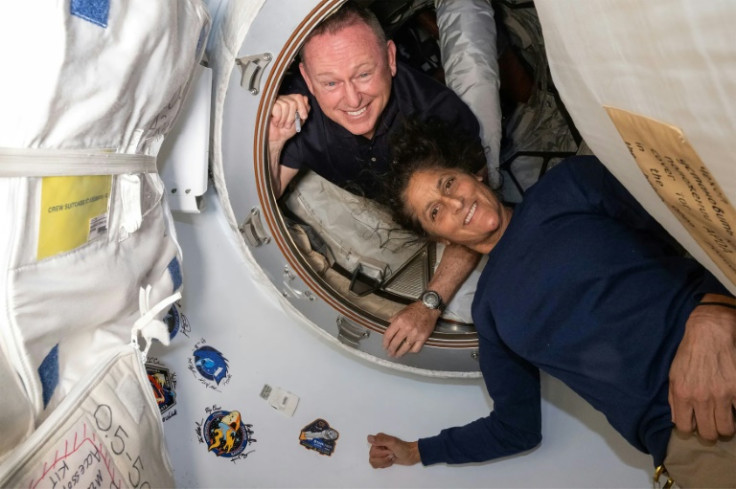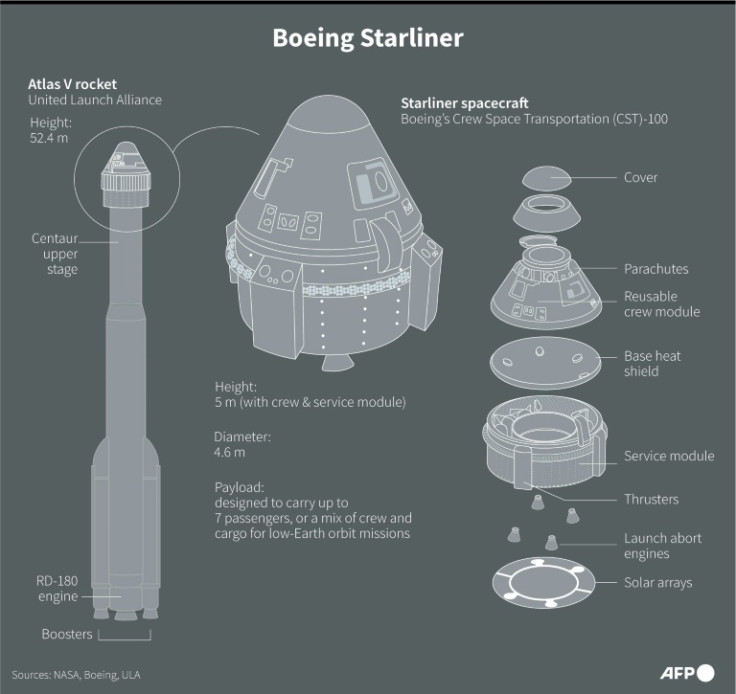Astronauts Stuck On ISS 'Confident' Starliner Will Bring Them Home

A pair of US astronauts stuck waiting to leave the International Space Station said Wednesday they were confident that the problem-plagued Boeing Starliner they rode up on would soon bring them home, even as significant uncertainties remain.
Butch Wilmore and Suni Williams blasted off on June 5 aboard the brand new spaceship that NASA is hoping to certify to ferry crews to-and-from the orbital outpost.
They docked the following day for what was meant to be roughly a week-long stay, but their return was pushed back because of thruster malfunctions and helium leaks that came to light during the journey.
No date has been set for the return, but NASA officials said Wednesday they were eying "late July."
Asked during a live press call from the station whether they still had faith in the Starliner team and the spaceship, mission commander Wilmore replied: "We're absolutely confident."
"I have a real good feeling in my heart that the spacecraft will bring us home, no problem," added Williams.
She said they were continuing to enjoy their time aboard the ISS, performing tasks like changing out the pump on a machine that processes urine back into drinking water, and carrying out science experiments such as gene sequencing in the microgravity environment.
They have also tested Starliner as a "safe haven" vehicle in case of problems aboard the ISS, and checked out how its life support performs when four people are inside.
Before Wilmore and Williams can come home, however, engineering teams need to run more simulations of similar thrusters and helium seals on the ground, to better understand the root causes of some of the technical issues Starliner experienced -- and modify the way it will fly down, if necessary.
It was known there was one helium leak affecting the spaceship before the launch, but more leaks emerged during the flight. Helium, while non-combustible, provides pressure to the propulsion system.
What's more, some of Starliner's thrusters that provide fine maneuvering initially failed to kick in during its approach to the station, delaying docking.
Engineers are not sure why the craft's computer "deselected" these thrusters, though they were able to restart all but one of them.
In a subsequent press call, Boeing executive Mark Nappi told reporters that the "working theory" for the thruster malfunction was overheating due to excessive firing.
Theories on the cause of the helium leaks ranged from debris entering the propulsion system to Boeing possibly installing seals that were undersized for the task.
NASA and Boeing insist Starliner could fly home in case of an emergency, particularly since the problems affected only certain thrusters that control orientation.
But much remains unclear -- including whether the orientation control thrusters that malfunctioned have become degraded, which would make it necessary to rely on other thrusters during descent, NASA official Steve Stich said.
He insisted that NASA wasn't yet considering bringing Williams and Wilmore back on a SpaceX Crew Dragon, in what would amount to a major humiliation for the aerospace giant Boeing, whose reputation has taken a hit in recent years over the safety crisis affecting its commercial jets.
"The prime option today is to return Butch and Suni on Starliner," said Stich, while conceding that a return flight on a SpaceX spaceship can't be ruled out.
In 2014, both SpaceX and Boeing were awarded multibillion-dollar contracts by NASA to develop crewed spaceships after the retirement of the Space Shuttle program. SpaceX carried out a successful crewed test in 2020 and has flown dozens of people since.

© Copyright AFP 2025. All rights reserved.





















